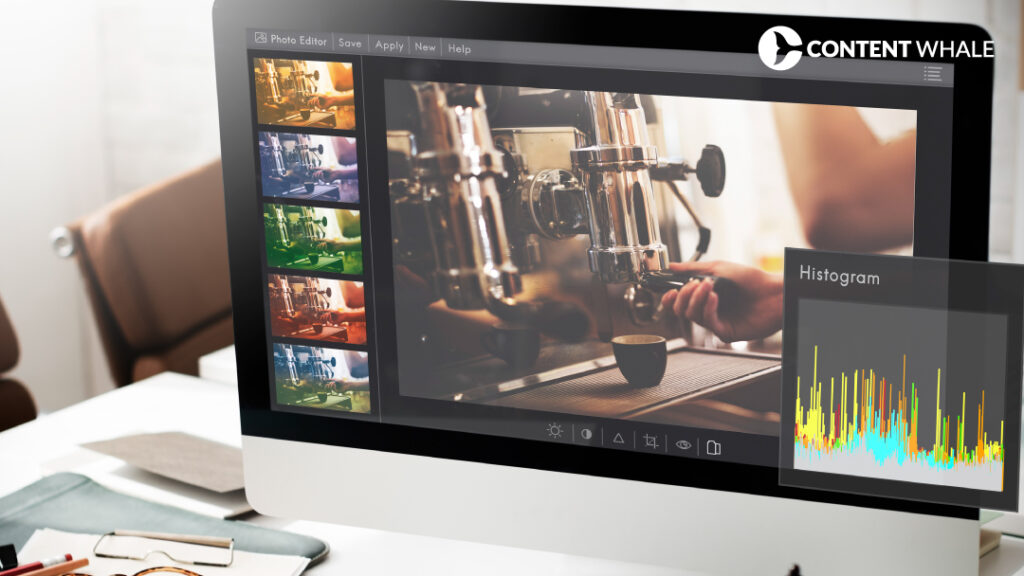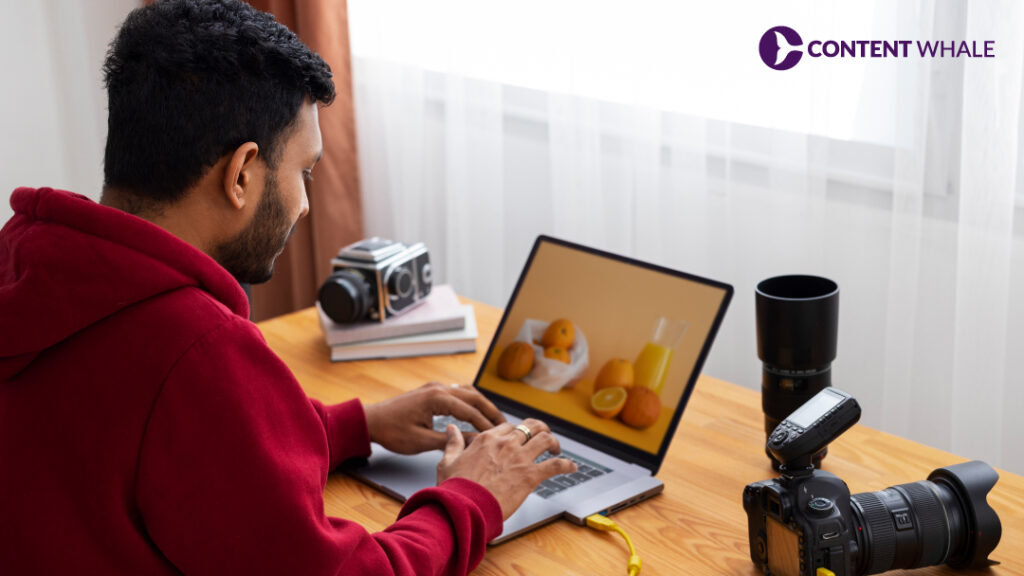Quick Summary
Learn how to create SEO-friendly images to improve your site’s search rankings and user engagement. Discover key techniques like image optimisation, effective use of alt text, and image compression. Optimize your images’ file format and ensure they load quickly with responsive images. Utilize image sitemaps and metadata to enhance visibility in image search. Implementing these practices will enhance image loading speed and overall user experience, driving more traffic to your site.
Do you know images significantly enhance website content and user experience. They make articles more engaging, help illustrate points, and can capture a reader’s attention more effectively than text alone. However, to maximize the benefits of images on your site, it’s essential to make them SEO-friendly images. This means ensuring that your images are optimized for search engines and load quickly for users.
Image optimization plays a key role in improving your site’s performance and visibility. Statistics show that websites with optimized images tend to perform better in search rankings and user engagement. For instance, 72% of marketers consider content relevancy, which includes optimized images, the most effective SEO factor.
Moreover, Google processes around 100,000 search queries every second, translating to nearly 9 billion searches per day, highlighting the importance of appearing in image search results .
By properly optimizing images, you can reduce image loading speed, enhance user experience, and improve your search engine rankings. Research indicates that a website that loads in 1 second has a conversion rate five times higher than a site that loads in 10 seconds. This article will guide you through the best practices for image SEO, covering various aspects such as alt text, image compression, choosing the right file format, and more.
We’ll explore how to write effective alt text, the importance of responsive images, and the role of metadata and image sitemaps in enhancing your site’s visibility. Additionally, we’ll discuss tools and techniques for image optimisation that ensure your website remains fast and efficient.
By the end, you’ll have a comprehensive understanding of how to create SEO-friendly images that boost your site’s performance and search rankings.
The Importance of SEO-Friendly Images
1. How Images Contribute to SEO
Images do more than just add visual appeal to your website; they play a significant role in SEO. Optimized images enhance the user experience, making your site more engaging and easier to navigate. When users find your content visually appealing and easy to understand, they are more likely to spend time on your site, reducing bounce rates and increasing dwell time.
These factors signal to search engines that your content is valuable, positively impacting your search rankings.
2. Impact on User Experience and Site Engagement
High-quality images can significantly boost site engagement. Websites with compelling visuals are more likely to capture and retain visitors’ attention, which can lead to higher conversion rates. Studies have shown that websites with optimized images see a notable improvement in conversion rates.
Users are more likely to stay longer on a site that loads quickly and displays images correctly across all devices. This is where responsive images come into play, ensuring that images adjust to various screen sizes, enhancing the user experience.
3. Role in Search Engine Rankings and Image Search Results
SEO-friendly images can directly influence your site’s search engine rankings. Google and other search engines prioritize fast-loading sites with high-quality content, including images. Properly optimized images reduce image loading speed, a critical factor in SEO.
Google has indicated that site speed is a ranking factor, and faster sites generally rank higher. Additionally, images appear in Google Image Search, which can drive additional traffic to your site. By optimizing your images with appropriate alt text, relevant metadata, and the right file format, you increase the chances of your images appearing in image search results.
Images are integral to both user experience and SEO. They enhance engagement, reduce bounce rates, and improve dwell time, all of which are important signals to search engines.
Best Practices for Image Optimization

1. Choosing the Right File Format
Selecting the appropriate file format for your images is the first step in image optimisation. The choice of format affects image quality and file size, which in turn impacts image loading speed. JPEG is ideal for photographs because it provides a good balance between quality and file size.
PNG is better for images that require transparency or sharper details, such as logos or icons. WebP is a newer format that offers superior compression and quality, though browser support can be limited. Using the right file format ensures your images look great and load quickly.
2. Techniques for Image Compression
Image compression reduces file sizes without significantly compromising quality, improving image loading speed and overall user experience. Various tools, such as TinyPNG, ImageOptim, and JPEGmini, are available for this purpose.
These tools can help you achieve smaller file sizes while maintaining acceptable image quality. Always test the compressed images to ensure they meet your standards. By reducing the file size, you ensure your website loads faster, which is crucial for both SEO and user satisfaction.
3. Importance of Image Dimensions and Responsive Images
Using the correct image dimensions is crucial for SEO-friendly images. Uploading images that are too large for their display area can unnecessarily slow down your site. Always resize images to the exact dimensions needed on your website. Implementing responsive images using the srcset attribute in HTML allows the browser to choose the appropriate image size based on the user’s device.
This technique ensures that images load quickly on all devices, enhancing the user experience. For example, you can serve smaller images to mobile users and larger images to desktop users, ensuring optimal performance across all platforms.
4. Using Image Sitemaps to Improve Indexing
Including images in your image sitemaps helps search engines index them more effectively. An image sitemap provides search engines with additional information about your images, such as their location, caption, and title.
This makes it easier for search engines to understand and index your images, increasing the chances of them appearing in image search results. Ensure that your sitemap is updated regularly to reflect any changes or additions to your images.
Optimizing your images involves selecting the right file format, applying image compression, using appropriate dimensions, implementing responsive images, and maintaining an updated image sitemap.
These best practices enhance image loading speed, improve user experience, and boost your site’s visibility in search engines. By following these techniques, you can create SEO-friendly images that contribute positively to your site’s performance and search rankings.
Using Alt Text Effectively
1. Definition and Importance of Alt Text
Alt text (alternative text) is a brief description added to an image’s HTML tag that describes the image’s content. This text serves several important purposes. First, it helps visually impaired users who rely on screen readers understand the content of images.
Second, alt text improves image SEO by providing search engines with context about the image, which helps in indexing and ranking the image in image search results.
2. How to Write Effective and Descriptive Alt Text
Writing effective alt text involves being both descriptive and concise. Your goal is to accurately describe what the image depicts while incorporating relevant keywords naturally. Here are some tips for writing good alt text:
- Be Specific: Describe the image in detail. For example, instead of writing “dog,” write “golden retriever playing in the park.”
- Use Relevant Keywords: Incorporate keywords that are relevant to the image and the page’s content. Avoid keyword stuffing.
- Keep It Short: Aim for a length that is informative but not overly verbose, typically around 125 characters.
3. Examples of Good and Bad Alt Text Practices
Good Alt Text:
- “Golden retriever puppy playing with a red ball in the park.”
- “Close-up of a fresh, colorful garden salad with tomatoes, cucumbers, and lettuce.”
Bad Alt Text:
- “Image1234.jpg” – This does not describe the image at all.
- “Dog” – This is too vague and does not provide enough information.
4. Role of Alt Text in Accessibility and SEO
Alt text is essential for making your website accessible to all users, including those who use screen readers. It ensures that visually impaired users can understand the content of your images. From an SEO perspective, alt text helps search engines understand what the image is about, improving the chances of the image appearing in image search results.
Properly written alt text contributes to your overall image optimisation strategy, enhancing the visibility of your images and improving the user experience.
Alt text is a vital component of creating SEO-friendly images. It improves accessibility for visually impaired users and provides valuable context to search engines, helping your images appear in image search results.
By writing clear, descriptive, and keyword-rich alt text, you can enhance your image SEO and ensure your images contribute positively to your site’s performance. Implementing effective alt text is a straightforward yet powerful step in your image optimisation process.
Enhancing Image Search Visibility

1. Importance of Titles, Captions, and Surrounding Text
Titles, captions, and the text surrounding your images provide additional context that helps search engines index your images more accurately. When writing captions, use natural language and include relevant keywords where appropriate. For example, a caption for a photo of a golden retriever could be “A playful golden retriever enjoying a sunny day at the park.”
The text surrounding your images should also be relevant and informative. This contextual information helps search engines understand the image’s relevance to the page’s content, improving its chances of appearing in image search results. Ensuring that your images are closely tied to the surrounding text enhances the overall user experience and boosts your site’s SEO.
2. Best Practices for Image Metadata and EXIF Data
Metadata and EXIF data provide additional details about your images, such as the camera settings used to take the photo, the location, and the date. Including metadata helps search engines index your images more effectively. Tools like Adobe Photoshop and online services can help you edit and add metadata to your images.
When adding metadata, ensure it includes relevant keywords and descriptions. This practice enhances your image SEO by providing search engines with more information about the image content. Additionally, well-maintained metadata can help improve your images’ ranking in image search results.
Enhancing the visibility of your images in search results involves optimizing file names, alt text, titles, captions, and surrounding text. Additionally, using metadata and EXIF data effectively can provide search engines with more context about your images.
These practices contribute to creating SEO-friendly images that not only improve your image SEO but also drive more traffic to your website through image search. By following these best practices, you can ensure that your images are well-optimized and visible to a broader audience.
Tools and Plugins for Image Optimization

1. Overview of Popular Image Optimization Tools
Optimizing images is a critical step in creating SEO-friendly images. Various tools can help you achieve this without compromising quality. Tools like TinyPNG, ImageOptim, and JPEGmini are popular for their ability to perform image compression effectively. These tools reduce file sizes, improving image loading speed and overall user experience.
TinyPNG uses smart lossy compression techniques to reduce the file size of your PNG and JPEG images. ImageOptim is another excellent tool, particularly for Mac users, that removes unnecessary metadata and compresses images to reduce their size. JPEGmini optimizes JPEGs while maintaining their resolution and quality, making it ideal for high-quality photos.
2. Best WordPress Plugins for Image Optimization
Several plugins can automate image optimization for WordPress users, ensuring that every image uploaded is SEO-friendly. Smush and ShortPixel are two of the most popular plugins available.
Smush automatically compresses and optimizes images as you upload them to your media library. It also scans existing images on your site and compresses them without losing quality. Additionally, Smush strips unnecessary metadata and optimizes images to improve image loading speed.
ShortPixel is another powerful plugin that offers both lossy and lossless compression. It optimizes images in bulk and provides a simple interface for managing your image optimization settings. ShortPixel also supports the WebP file format, which offers superior compression and quality.
3. Integrating These Tools into Your Workflow
Integrating these tools into your workflow is straightforward and can significantly enhance your image SEO efforts. For example, after editing an image, use TinyPNG or ImageOptim to compress the file before uploading it to your website. If you’re using WordPress, install and configure a plugin like Smush or ShortPixel to automate the process.
By regularly using these tools and plugins, you ensure that all your images are optimized for SEO, improving image loading speed and enhancing the user experience. This continuous process of image optimisation will keep your website running smoothly and efficiently, contributing to better search engine rankings.
Utilizing image optimization tools and plugins is essential for maintaining SEO-friendly images. Tools like TinyPNG, ImageOptim, and JPEGmini, along with WordPress plugins like Smush and ShortPixel, can automate and streamline the image optimisation process.
By integrating these tools into your workflow, you ensure that your images are always optimized, improving image loading speed, enhancing user experience, and boosting your image SEO efforts.
Here’s a detailed table comparing the different image optimization tools and plugins:
| Tool/Plugin | Type | Compression Types | Supports File Formats | Removes Metadata | Automation | Additional Features |
|---|---|---|---|---|---|---|
| TinyPNG | Online Tool | Lossy | PNG, JPEG | Yes | No | Smart lossy compression |
| ImageOptim | Desktop App (Mac) | Lossless | PNG, JPEG, GIF | Yes | No | Strips unnecessary metadata |
| JPEGmini | Desktop App | Lossy | JPEG | No | No | Maintains resolution and quality |
| Smush | WordPress Plugin | Lossy and Lossless | PNG, JPEG, GIF, WebP | Yes | Yes | Bulk optimization, lazy load |
| ShortPixel | WordPress Plugin | Lossy and Lossless | PNG, JPEG, GIF, WebP | Yes | Yes | WebP conversion, CDN integration |
Conclusion

Optimizing your images for SEO is essential for improving your website’s performance and search rankings. SEO-friendly images play a significant role in attracting and retaining visitors by enhancing the overall user experience. Implementing techniques such as proper alt text, image compression, selecting the right file format, and ensuring responsive images can make a substantial difference.
By following best practices for image optimisation, you can significantly improve your site’s image loading speed, making it more user-friendly and efficient. Using tools and plugins like TinyPNG, ImageOptim, JPEGmini, Smush, and ShortPixel simplifies the process, ensuring that your images are always optimized for the web.
Regularly updating your image sitemaps and incorporating relevant metadata further boosts your image SEO efforts, increasing the likelihood of your images appearing in image search results. This continuous focus on optimization will not only enhance your site’s performance but also contribute to long-term SEO success.
Start implementing these techniques today to see a noticeable improvement in your site’s loading speed, user engagement, and search engine visibility. Optimizing your images ensures that your website remains competitive, delivering a superior user experience while achieving better search rankings.
FAQs
Why is image optimization important for SEO?
Image optimisation is essential for enhancing image SEO and improving your website’s performance. Optimized images load faster, which reduces image loading speed and enhances the user experience.
Faster-loading pages lead to lower bounce rates and higher engagement, both of which are crucial for better search engine rankings. Additionally, optimized images are more likely to appear in image search results, driving more traffic to your site.
How do I choose the right file format for my images?
Choosing the correct file format depends on the type of image and its use on your website. JPEG is ideal for photographs because it provides a good balance between quality and file size. PNG is suitable for images that require transparency or sharper details, such as logos.
WebP offers superior compression and quality, making it a great choice for a wide range of images, although its browser support is still growing. Selecting the right format ensures that your images remain SEO-friendly images with optimal quality and loading speed.
What are some best practices for writing alt text?
Writing effective alt text involves being descriptive and concise. Here are some tips:
- Be Specific: Clearly describe the content and context of the image. For example, “Golden retriever puppy playing with a red ball in the park.”
- Use Relevant Keywords: Incorporate keywords naturally without stuffing. This helps with image SEO and accessibility.
- Keep It Concise: Aim for around 125 characters, ensuring the description is clear but not overly verbose. Good alt text improves accessibility and helps search engines understand the image content, enhancing its visibility in image search results.
How can I optimize images for faster loading times?
To optimize images for faster loading times:
- Compress Images: Use tools like TinyPNG, ImageOptim, or JPEGmini to compress images. This reduces file sizes without significantly compromising quality.
- Use Correct Dimensions: Resize images to the exact dimensions needed for display on your website. Avoid using larger images than necessary.
- Implement Responsive Images: Use the srcset attribute in HTML to serve different image sizes based on the user’s device. This ensures responsive images that load quickly on all devices.
- Remove Metadata: Stripping unnecessary metadata can further reduce file sizes.
What tools can I use to optimize images for SEO?
Several tools can help with image optimisation:
- TinyPNG: An online tool that uses smart lossy compression to reduce the size of PNG and JPEG files.
- ImageOptim: A desktop app for Mac that compresses images and removes unnecessary metadata.
- JPEGmini: A tool that optimizes JPEG images while maintaining their quality.
- Smush (WordPress plugin): Automatically compresses and optimizes images upon upload and scans existing images.
- ShortPixel (WordPress plugin): This plugin offers lossy and lossless compression, supports WebP conversion, and integrates with a CDN.
These tools ensure that your images remain SEO-friendly images, enhancing image loading speed and overall user experience.





